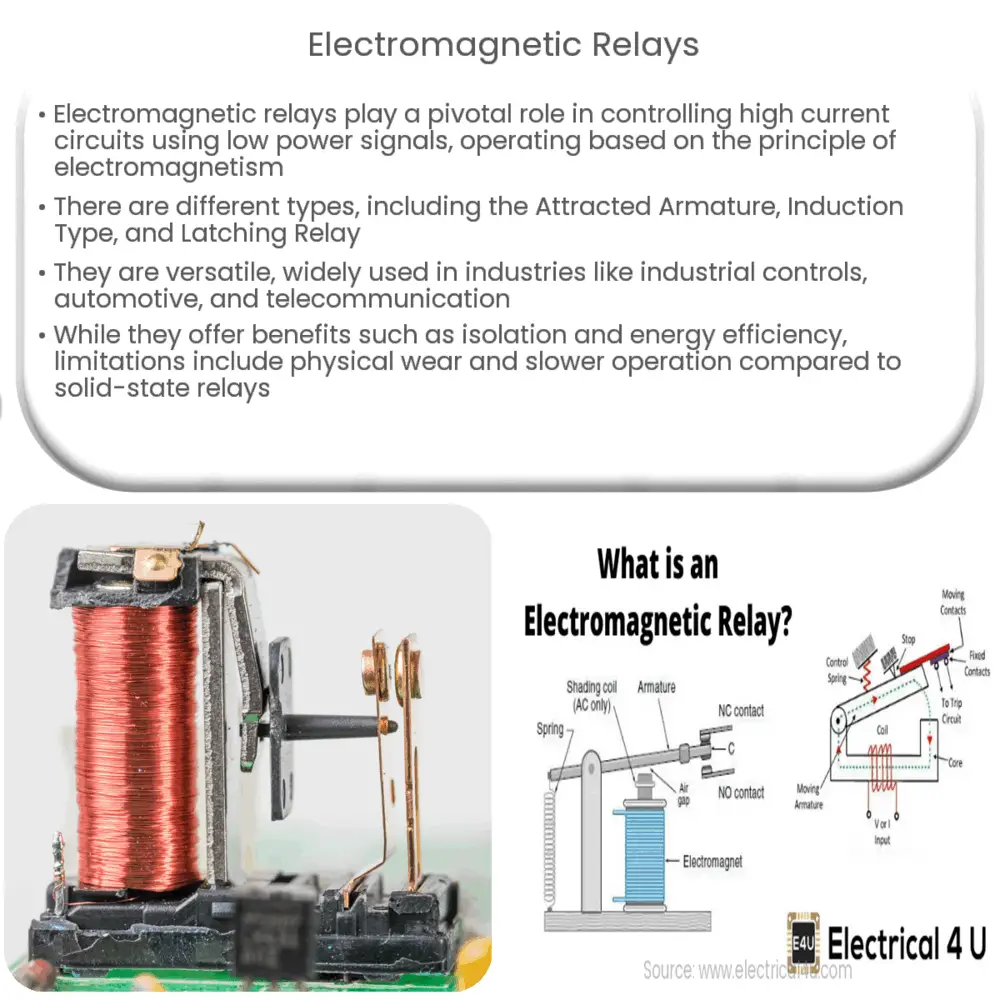Explore the world of electromagnetic relays: their working principle, types, applications, benefits, limitations, and modern advancements.

Understanding Electromagnetic Relays
Electromagnetic relays are essential devices in the field of electrical and electronic engineering. These electromechanical components play a significant role in controlling large current circuits with smaller ones. Understanding their working principle, types, and applications forms the cornerstone in utilizing them effectively.
Working Principle of Electromagnetic Relays
The core operating principle of electromagnetic relays hinges upon the basic concept of electromagnetism. When an electrical current passes through a coil, it generates a magnetic field around it. This electromagnetic field is then utilized to actuate a mechanically moving switch, which controls a larger electrical circuit. Thus, an electromagnetic relay allows for safer and more efficient control of high voltage or current circuits by a low-power signal.
Types of Electromagnetic Relays
Applications of Electromagnetic Relays
Due to their versatile nature and scalability, electromagnetic relays find widespread use across many industries. Here are a few typical applications:
In the next section, we will dive into the benefits, limitations, and modern developments in electromagnetic relay technology.
Advantages of Electromagnetic Relays
Electromagnetic relays come with a host of advantages:
Limitations of Electromagnetic Relays
Despite their advantages, there are a few limitations:
Modern Developments
In recent years, the development of solid-state relays has brought forward a new direction in relay technology. These relays, devoid of moving parts, have advantages such as longer lifespan, faster switching, and reduced physical wear. However, traditional electromagnetic relays are still widely used due to their cost-effectiveness and high current handling capabilities.
Conclusion
In conclusion, electromagnetic relays are a vital component in various electrical and electronic systems, providing safe and efficient control of high power circuits with low power signals. They find widespread application in numerous fields, from industrial controls to telecommunication equipment. Despite certain limitations such as physical wear and slower operation, the cost-effectiveness and robustness of these relays ensure their continued relevance in the face of emerging solid-state technologies.

